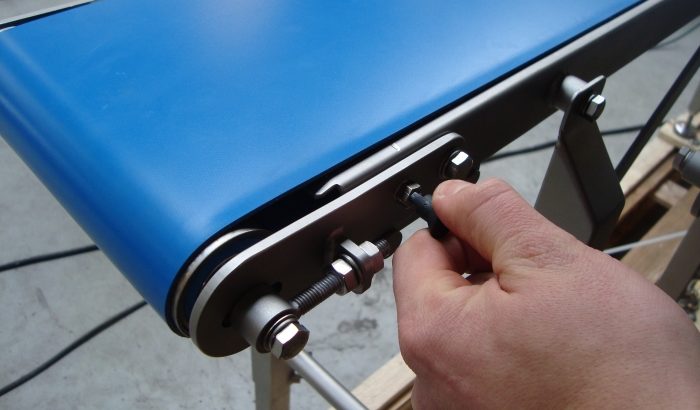Conveyor belts are vital components in various industries, facilitating the movement of materials and products efficiently. To ensure uninterrupted operation and optimal performance, regular maintenance is crucial. Let’s explore why maintenance matters for conveyor belts and strategies to keep them functioning at their best.
Importance of Conveyor Belt Maintenance
Maximizing Efficiency
Regular maintenance enhances the efficiency of conveyor belts, reducing downtime due to unexpected breakdowns or malfunctions. This ensures a smooth workflow and prevents disruptions in production or material handling processes.
Prolonging Lifespan
Proper maintenance significantly extends the lifespan of conveyor belts. Addressing issues promptly and conducting routine inspections and repairs prevents premature wear and tear, saving costs on frequent replacements.
Ensuring Safety
Well-maintained conveyor belts contribute to a safer working environment. Regular inspections and maintenance prevent accidents caused by faulty belts, reducing risks for workers and preventing damage to equipment.
Essential Maintenance Practices
Scheduled Inspections
Conduct routine inspections of conveyor belts to identify wear, damage, or misalignments. Look for signs of fraying, tears, mistracking, or unusual noise during operation. Establish a schedule for inspections, ensuring thorough checks at regular intervals.
Lubrication
Proper lubrication is critical for the smooth operation of conveyor belts. Apply lubricants to reduce friction between moving parts, such as pulleys and bearings, extending the life of the belt and components. Use lubricants recommended by manufacturers for optimal results.
Cleaning
Keep conveyor belts clean and free from debris, spillage, or buildup that can cause blockages or damage. Regular cleaning prevents material accumulation and minimizes the risk of contamination in sensitive industries.
Tension Adjustment
Maintain proper tension in the conveyor belt to prevent slippage or excessive wear. Regularly check and adjust tension according to manufacturer guidelines to ensure optimal performance.
Component Replacement
Replace worn-out or damaged components promptly. This includes pulleys, idlers, bearings, and splices. Follow a preventive replacement schedule for parts that have reached their expected lifespan.
Implementing Maintenance Strategies
Create a Maintenance Schedule
Develop a comprehensive maintenance schedule outlining inspection dates, lubrication intervals, cleaning routines, and component replacement timelines. Assign responsibilities to qualified personnel for each task.
Train Personnel
Provide training to maintenance personnel on proper inspection techniques, safety protocols, and maintenance procedures specific to conveyor belts. Trained staff can identify issues early and perform repairs efficiently.
Use Advanced Technologies
Utilize advanced technologies, such as sensors or monitoring systems, to track conveyor belt performance. These systems can detect abnormalities and predict potential failures, allowing for proactive maintenance.
Document Maintenance Records
Maintain detailed records of maintenance activities, including inspections, repairs, replacements, and lubrication schedules. Documenting maintenance history helps in tracking performance trends and planning future maintenance tasks.
Partner with Manufacturers or Experts
Collaborate with conveyor belt manufacturers or maintenance experts for guidance on best practices and specialized maintenance requirements. Seek their advice on optimizing maintenance schedules and techniques.
Belt Tracking
Regularly monitor and adjust belt tracking to ensure proper alignment. Misaligned belts can cause premature wear and tear, affecting the overall performance and lifespan of the conveyor system. Use tracking mechanisms or tools to align the belt correctly, preventing issues and extending its durability.
Maintenance is the cornerstone of keeping conveyor belts operating at peak performance. By implementing regular inspections, lubrication, cleaning, tension adjustments, and timely component replacements, industries can ensure the longevity and efficiency of their conveyor systems.
A well-maintained conveyor belt not only minimizes downtime and repair costs but also enhances safety and productivity in various industries. By prioritizing maintenance practices and implementing strategic measures, businesses can rely on their conveyor belts to operate smoothly, contributing to overall operational success.
Facing conveyor belt challenges in your manufacturing? Ontario Belting has tailored solutions. Contact us now and enhance manufacturing efficiency!



















